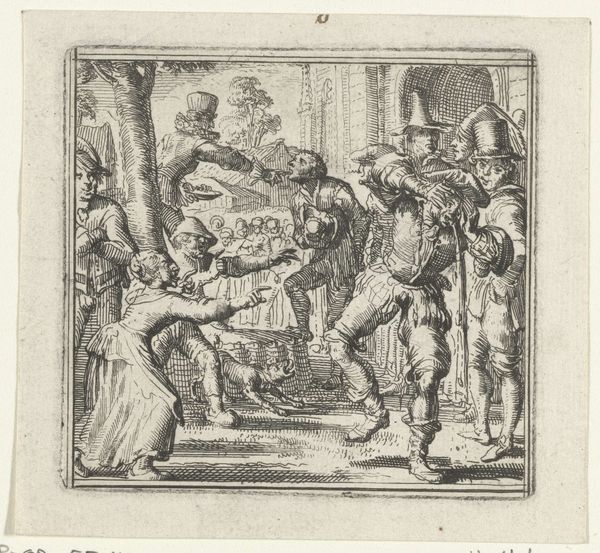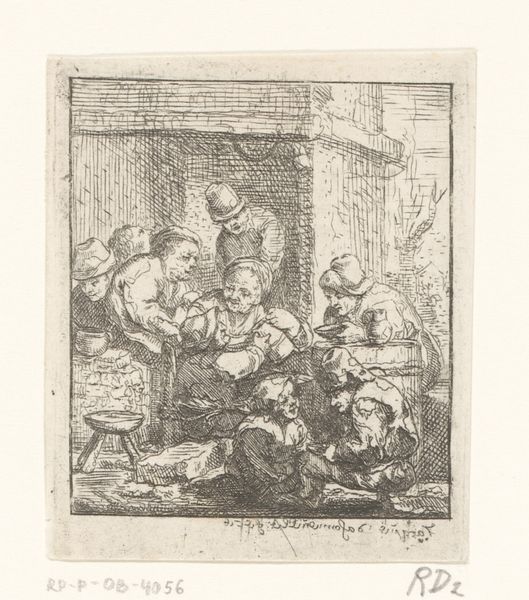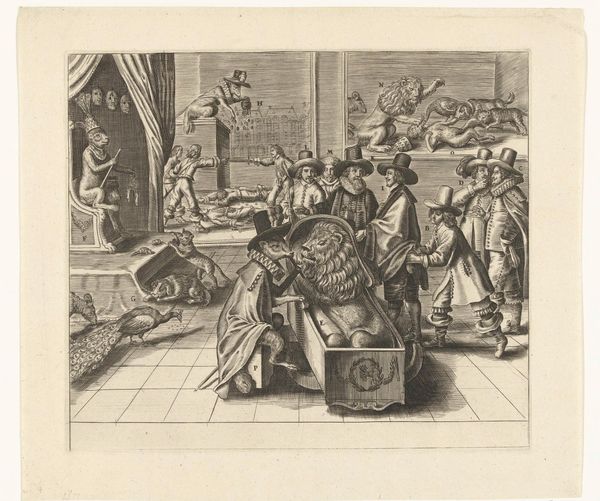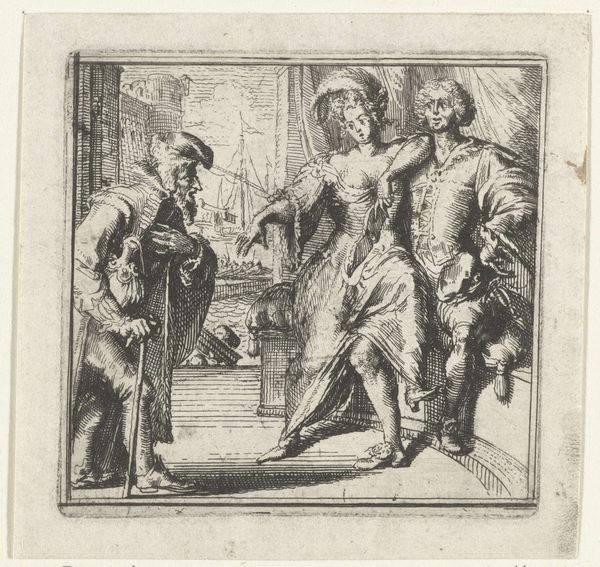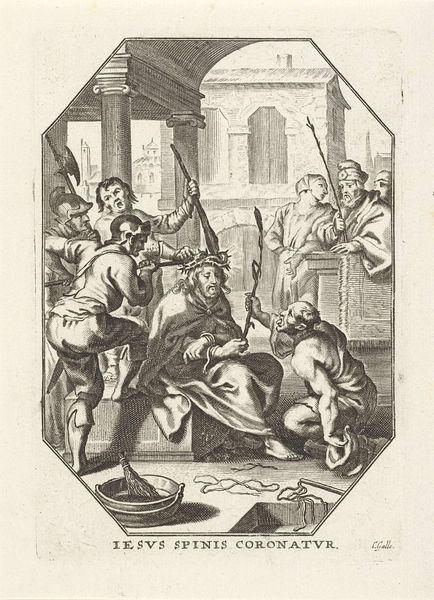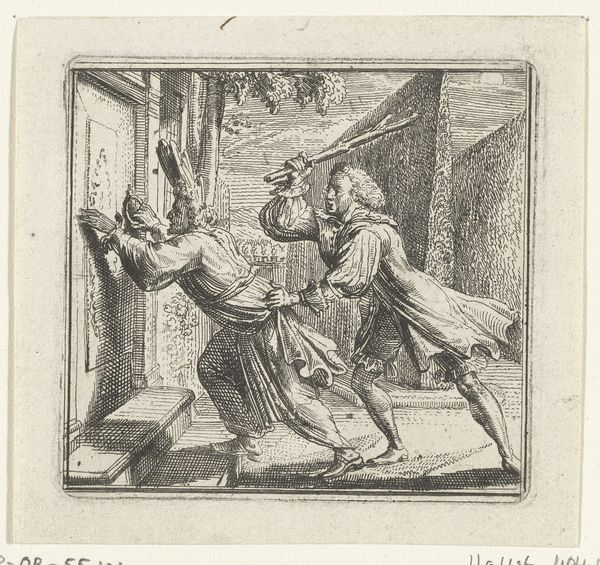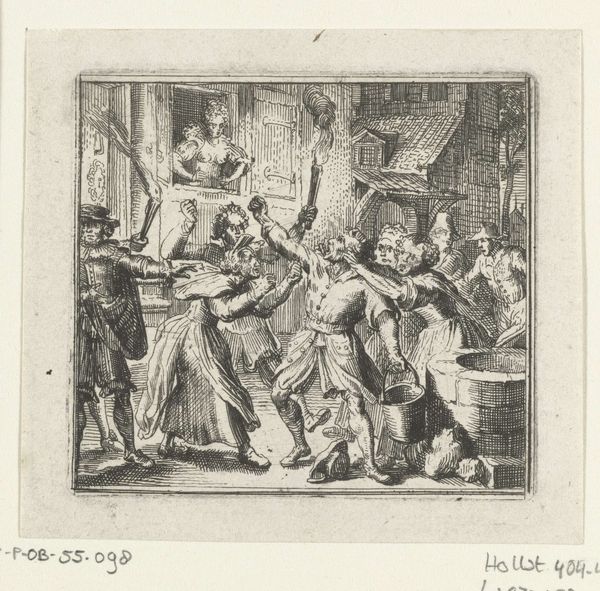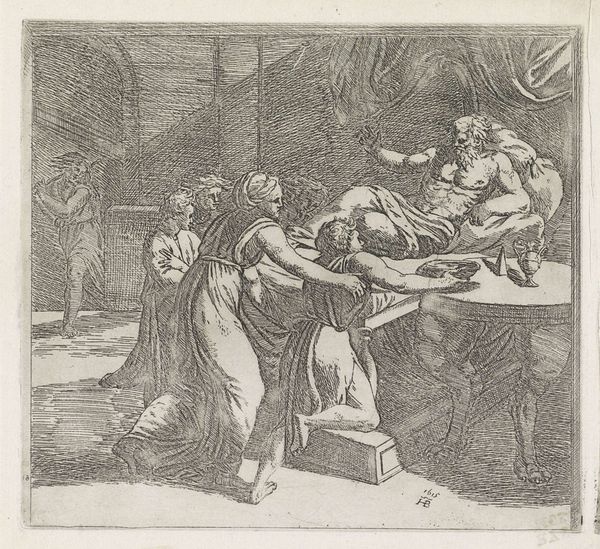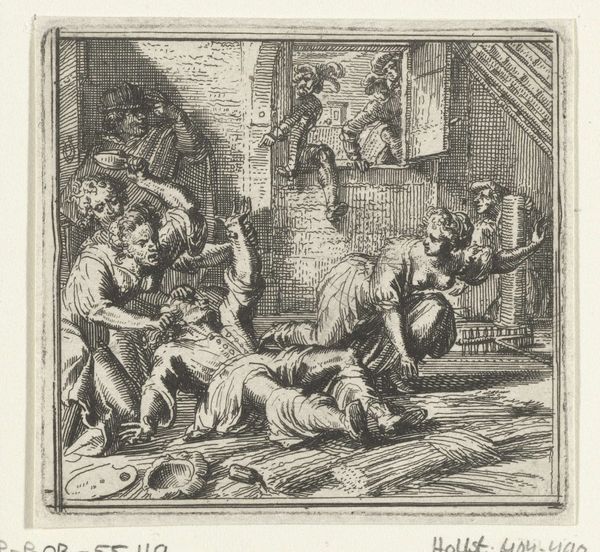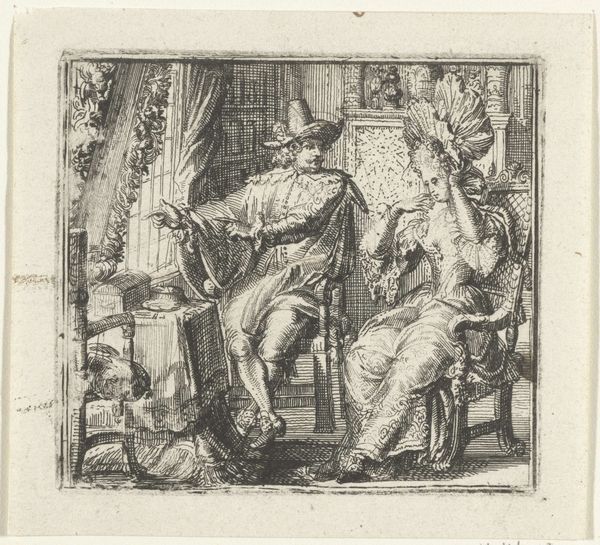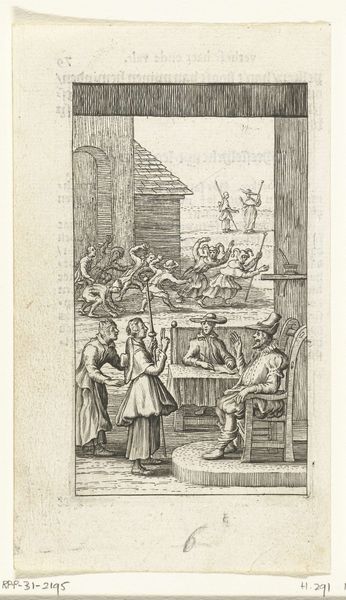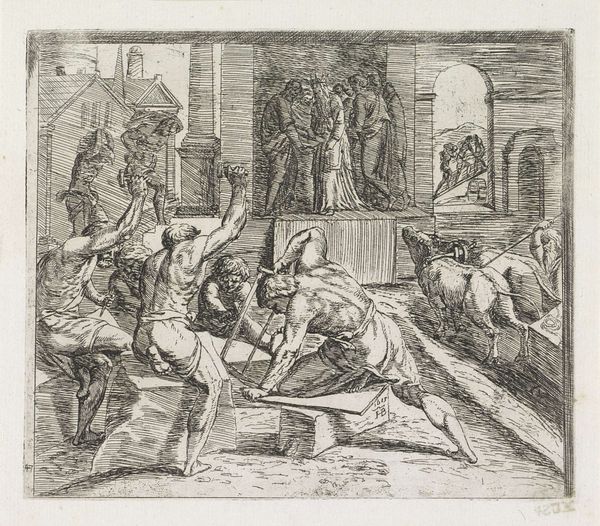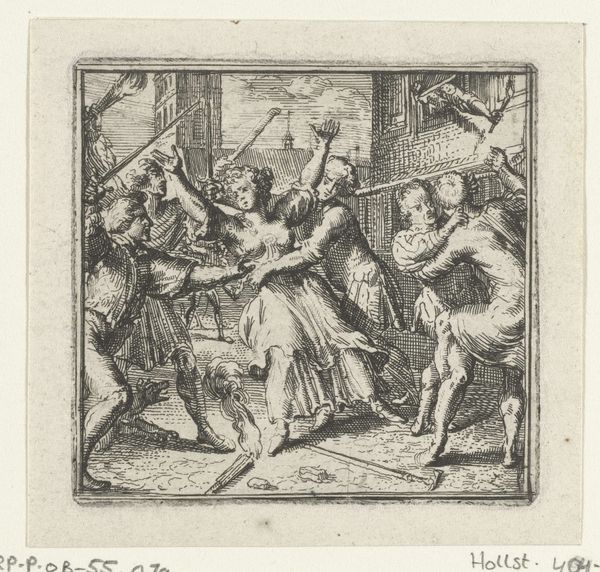
drawing, engraving
#
drawing
#
aged paper
#
toned paper
#
light pencil work
#
narrative-art
#
baroque
#
pencil sketch
#
old engraving style
#
sketch book
#
figuration
#
personal sketchbook
#
sketchbook drawing
#
history-painting
#
storyboard and sketchbook work
#
sketchbook art
#
engraving
Dimensions: height 73 mm, width 80 mm
Copyright: Rijks Museum: Open Domain
Curator: Here we have an engraving by Romeyn de Hooghe, dating back to 1697. It’s an illustration made for Boccaccio's "Decameron," now residing here at the Rijksmuseum. What are your immediate impressions? Editor: Well, immediate impression is definitely chaotic. Lots of dramatic action squeezed into this tiny scene. A tumble, a pursuit... almost slapstick, yet there's an undercurrent of something darker brewing, no? It has an oppressive feel, despite the size. Curator: I can see that. Consider the figures for a moment. Notice the fallen man—his pose is almost a mirror of Icarus, plummeting. The cross-topped structures in the background looming. De Hooghe frequently incorporated religious and allegorical symbols like that to comment on morality. Editor: Ah, interesting! I just saw the chaos, the almost cartoonish flight and fumble. But knowing it's from the "Decameron," a collection of stories often skirting the line of societal norms... that darker brew makes sense now. It looks almost like it's referencing injustice. Curator: Precisely. This particular plate likely illustrates one of the tales where social order is overturned, and the church, represented by that cross-topped tower, is either complicit or ineffectual. Look how the cleric figure is towering over him with the soldiers behind. He looks almost self-satisfied. The expressions are striking. Editor: Yes! And see the city’s background with all those people watching. There's a real sense of society's gaze. Curator: Indeed. De Hooghe, a master of propaganda too, often layered his images with such subtle commentaries, tapping into the viewer's pre-existing understanding of cultural symbols. The style also connects with storytelling in the baroque style, always looking for high drama. Editor: It’s remarkable how much narrative he fits into such a small space. The dynamism is undeniable, now even more meaningful when viewed through that symbolic lens. Thank you for this image tour and the depth. I now wonder, what truth this scene truly tries to illuminate?
Comments
No comments
Be the first to comment and join the conversation on the ultimate creative platform.
